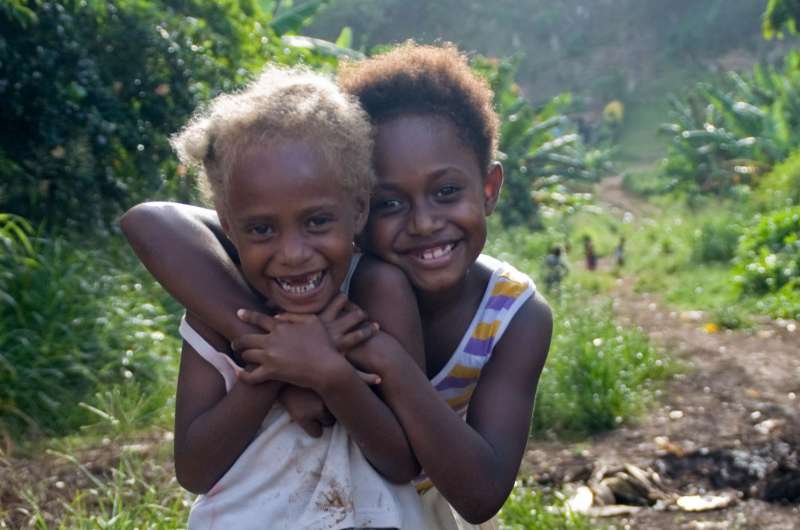November 2, 2016 report
People from Melanesia may carry genetic evidence of a previously unknown extinct hominid species

Bob Yirka
news contributor

(������Ƶ)—A team of researchers affiliated with the MD Anderson Cancer Center in Texas and the University of Utah has given a at this year's American Society of Human Genetics Annual Meeting which included evidence that suggests we humans may have an unknown early cousin—a third branch of the hominid tree.
In their presentation, the team described a model they had built using an estimation tool they have developed that showed that the transfer of genes between populations in Melanesia suggested something was missing—a link or lineage that could be from an unknown branch of the hominid tree representing an unknown archaic population. Our current tree shows us humans, Neanderthals and Denisovan, which is believed to be an extinct species of Neanderthal.
The model created by the researchers suggested that the amount of Denisovan DNA in modern Melanesian people is lower than other models have shown—from 3 to 6 percent down to just 1.1 percent—the difference, the team suggests is the missing link—the possible third branch. People from Europe, prior research has shown, have no Denisovan DNA at all and Asians have just a very small amount. In contrast, DNA contributions from Neanderthals has been found to be 2.74 percent in people from Melanesia; slightly less than people from Europe and Asia. The researchers suggest the mysterious third group may also have mated and reproduced with Denisovans further clouding the developing picture. Making the work more difficult is the dearth of bones found that have been identified as Denisovan, though there has been enough to collect DNA samples.
There is also another mystery inherent in Melanesian people—their skin is as dark as people from Africa, yet a quarter of them have blonde hair—and no one knows why.
The researchers note their new tool also suggests that there were twice as many humans living in Africa during our formative years as other models have shown and that the split with Neanderthals occurred approximately 100,000 years later.
The researchers acknowledge that there is still much to learn and that a lot more research will have to be done before any real conclusions can be drawn regarding our family tree, but suggest the result is likely to be a mosaic, rather than something clear and simple.
Written for you by our author —this article is the result of careful human work. We rely on readers like you to keep independent science journalism alive. If this reporting matters to you, please consider a (especially monthly). You'll get an ad-free account as a thank-you.
More information: PgmNr 73: A complex history of archaic admixture in modern humans:
© 2016 ������Ƶ



















